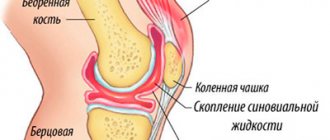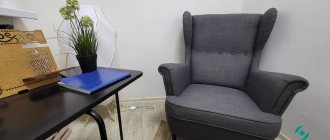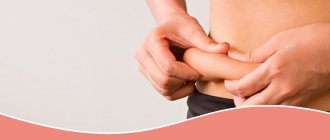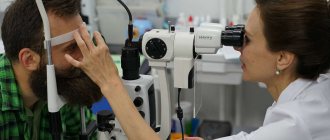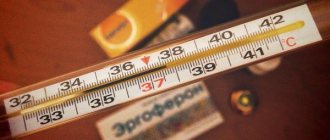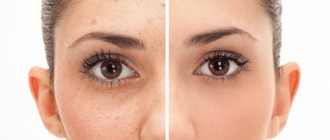Calluses
occur in places where the skin experiences constant friction or pressure. By forming a callus, the body tries to protect itself from this adverse effect.
First there is a wet callus
- a bladder filled with liquid - lymph. Lymph is needed for the speedy healing of damaged tissues. If the mechanical irritation stops, new skin forms under the blister and the callus disappears.
If the external influence continues, the body begins to build up a protective layer of dead, horny cells. Dry callus appears
, looking like a white-yellow compaction, usually with round outlines.
Calluses form on the hands (during physical work) and on the feet (on the heels or toes). As a rule, it is foot calluses that worry us.
Callus
Calluses can be especially painful. In the center of the callus there is a hole from which the head of the callus protrudes. This head covers the root, which goes deep into the soft tissues and causes pain when walking.
Such a callus can form as a result of a foreign body (for example, a splinter or a pebble) getting under the skin. If the splinter is not removed, when it moves, it begins to irritate the tissues surrounding it, and the body, in response to irritation, forms a corpus callosum, but not from the outside, but from the inside. Another reason for the appearance of calluses is a dermatotropic virus.
Corns
| Removal of complicated corns when pain occurs (1 unit) | – | 500 |
| Removal of uncomplicated corns (1 unit) | – | 350 |
| Application of unloading material when removing corns - level I (1 unit) | – | 350 |
| Application of unloading material when removing corns - level II (1 unit) | – | 550 |
| Recommendations and instructions for foot care | – | 500 |
| Unloading dressing (1 unit) | – | 350 |
| Applying an antibacterial and antiseptic bandage to the problem area - level I (1 unit) | – | 550 |
| Applying an antibacterial and antiseptic bandage to the problem area - level II (1 unit) | – | 550 |
| Bandaging the problem area (1 unit) | – | 500 |
Calluses: causes, types and methods of control
25.09.2019
When wearing uncomfortable shoes for a long time or simply under the influence of prolonged friction or pressure, thickenings appear on the skin (often painful and unsightly), and it is not so easy to get rid of them. These are calluses . Calluses are essentially hardening of dead skin cells that do not have time to exfoliate. When there is prolonged physical impact on an area of skin, the body perceives this as a threat and tries to protect its integrity by growing a thicker layer of cells on it.
Causes of calluses
Most often, the formation of calluses on the feet is caused by improperly selected shoes. But doctors note that sometimes calluses can indicate various disorders in the body. For example, calluses on the toes can signal problems with the cardiovascular system. If there are such on the right leg, then this may also indicate poor liver . A callus on the big toe may indicate dysfunction in the female organs. Thus, the appearance of calluses can signal the onset of serious diseases in the body, when obvious symptoms are not yet visible.
Types of calluses
- Dry, hard calluses are rough areas on the skin that have been trampled or formed as a result of prolonged physical activity and often require treatment.
- Soft, watery calluses form due to friction, such as from tight shoes. These calluses fill with lymph and are often painful. Here we should highlight one more variety among them, namely, blood calluses . They are also formed due to friction, but filled inside not with transparent lymph, but with blood . This type of callus is especially dangerous because the blood inside indicates that it is located directly on a blood vessel . And this is an open gate for infection to enter the body.
- It is also necessary to distinguish a separate type of calluses - bone calluses , which look like hardening under the skin and feel like a hump to the touch. This type of callus cannot be treated externally and can only be removed surgically .
Treatment of calluses
First, we should talk about the treatment of wet calluses , since they are dangerous for the body. Under no circumstances should you pierce them or squeeze out lymphatic fluid, especially blood . This can lead to infection. There is no need the callus ; this will make it take even longer to heal. It is necessary to determine the cause of the formation of such a callus , eliminate it, and the callus with an antiseptic. If such a callus grows on its own, it is necessary to treat it with an antiseptic as quickly as possible and seal it with an adhesive bandage, otherwise inflammatory and purulent processes may develop.
Treating hard, dry calluses often takes a long time. Of course, it is better to entrust this to doctors or cosmetologists, then you will be sure that everything is done properly without risk to health.
Effective in the fight against dry calluses is a clinical laser method for removing calluses , but before using it you should definitely consult a specialist.
Published in Surgery Premium Clinic
Prevention measures
A callus is a skin injury comparable to a cut or burn. It is difficult to insure yourself against education. It appears after a long walk, with concomitant diseases.
It is necessary to monitor your health regularly. Measures that will help:
- choose your shoes carefully;
- Don’t walk around in high heels all day;
- do not wear new shoes if you expect long walks;
- if a fresh corn appears, do not wear the same shoes again;
- consult a doctor if there is suppuration or inflammation;
- Cover the blister with a bandage in time, avoiding opening the wound.
If a rough patch of skin has formed, you cannot always act on your own. If you can’t cope with improvised means, contact a specialist. He will conduct a visual examination and prescribe diagnostic and therapeutic procedures.
Get treatment for dry calluses in Moscow at the Tatyana Krasyuk Medical Center. We offer comprehensive services, reliable equipment, and the work of experienced doctors. Book a consultation with a qualified specialist. Leave a request on the website, call an employee.
Sources of the problem
Treatment of calluses on the feet is carried out for various reasons. An examination is being carried out. It will identify the source and help you choose a removal method. Manifestations appear in a number of cases:
- Uncomfortable shoes. It puts pressure on the foot, leads to external manifestations, and cannot be eliminated with improvised means.
- Spinal injuries. A person leans more heavily on his leg, asymmetrical calluses appear on the foot.
- Viral infections. A dermatotropic virus spreads, penetrating into the deep layers of the skin. Round formations appear. They do not go away with cosmetic measures or improper treatment.
- Excess weight. Significant body weight negatively affects the body and leads to pressure on the foot. The only way out is to check the hormonal system, eat right, and increase physical activity.
How to get rid of calluses?
To get rid of calluses, it is enough to temporarily eliminate activities that cause chafing of the skin. You can remove dry calluses manually: you need to steam the skin of your hands and remove rough areas using pumice. In addition, the surgeon may recommend the use of keratolytic agents, which soften the skin. You cannot remove calluses on your own with the help of keratolytics if you have diabetes or pathologies of the immune system, since after removal a wound may form through which an infection can enter the body
You should see a doctor if the callus is painful to step on or touch, as this symptom may indicate the presence of a heel spur, a calcified growth on the surface of the bone. Removal of the callus core is performed by a doctor because removing the callus at home is ineffective and unsafe.
To quickly cure a water callus and avoid its damage, it is necessary to reduce the contact of the inflamed skin with the shoes: you can put a foam insert or a cotton ball between your toes. If the water callus bursts, the doctor prescribes the use of wound healing agents with an antiseptic effect.
Callus removal is performed surgically using local anesthesia. First, the surgeon cuts off the keratin growth on the skin, and then pulls out the rod. To speed up the healing process and prevent the wound from becoming infected, it is recommended to wear a sterile dressing for several days after the callus removal procedure. The surgeon also prescribes local use of antiseptics for two to three weeks after removal of the callus.
Treatment of dry old calluses
The main principle will be repeated steaming with gradual scraping with a pumice stone. Or, after softening in hot water with herbal infusions, with the addition of salts and oils, medicinal ointments are used for baths.
Photo: https://www.notizie.it/wp-content/uploads/2018/06/verruche-plantari.jpg
Traditional recipes help remove calluses:
- Onion skins soaked in vinegar. In the form of acid, it is kept for two weeks. Then dry and apply. But healthy skin around the area needs to be protected with greasy cream, Vaseline, lard or goose fat.
- Kalanchoe leaves with the outer skin removed. They are tied onto a pre-steamed callus. Then they scrape off what has softened and rub it with moisturizer.
- Indoor Crassula or Money Tree. Treat its leaves in the same way as Kalanchoe.
Beauty salons offer hardware removal. A special technique easily removes rough, dead epidermis. But such services are expensive, and there is always a risk of infection.
If treated correctly, they are removed without leaving any traces. But neglected, very outdated ones can lead to unpleasant and painful complications. And, of course, the best option would be to prevent the appearance of calluses.
New shoes should be worn together with socks until they take the shape of your feet. Flesh-colored patches are the most useful thing in your purse in case of scuff marks. Gel insoles also save you from discomfort.
